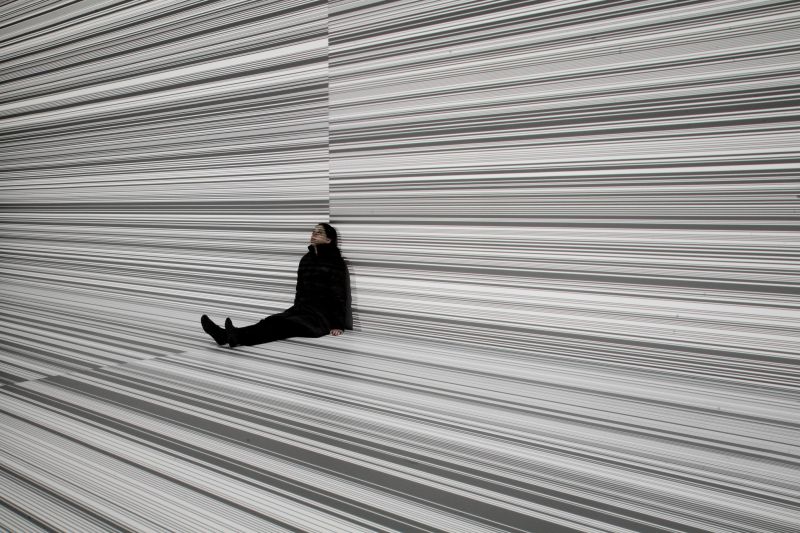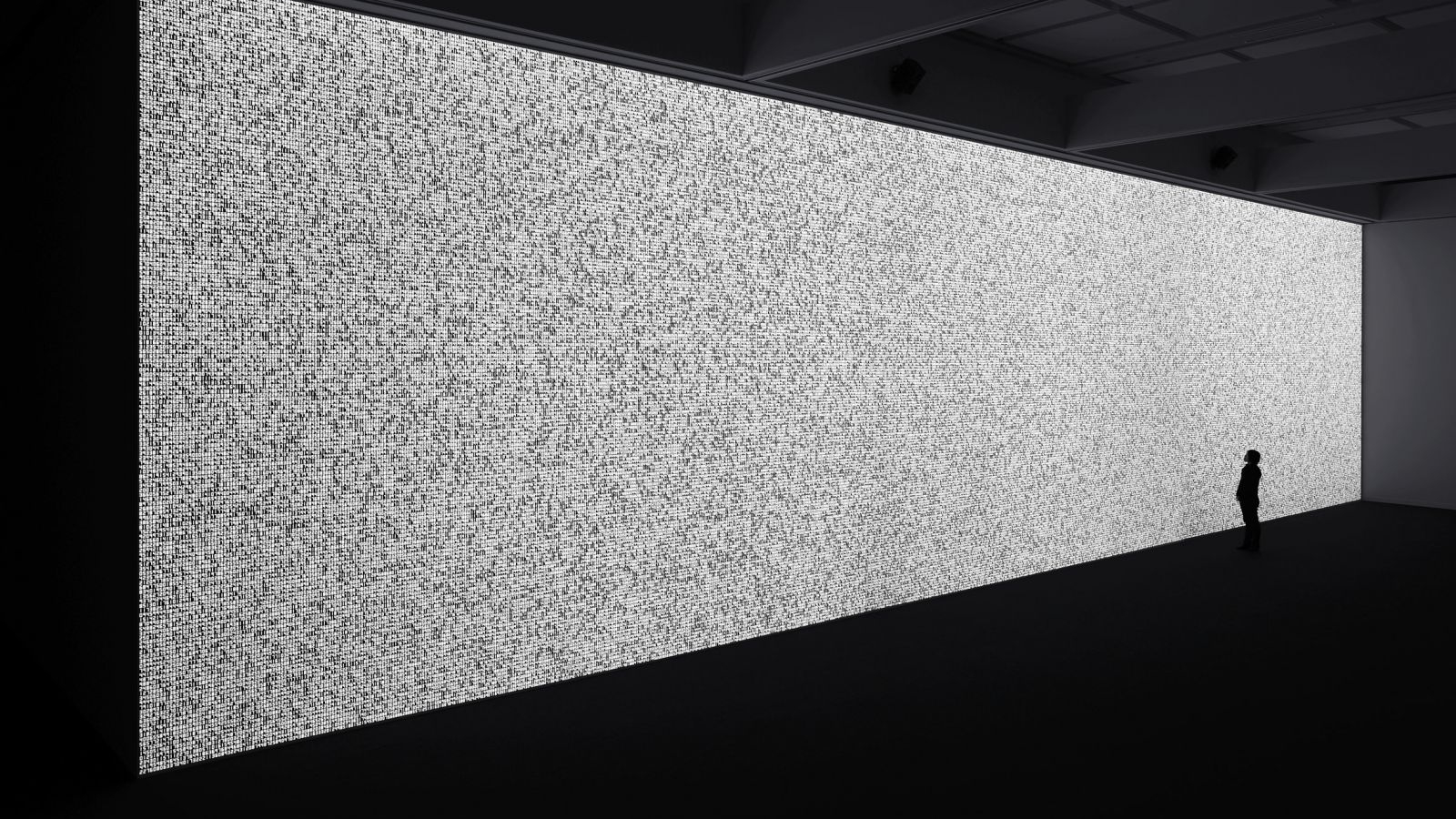By Vivian Lee
Musician and visual artist Ryoji Ikeda finds his inspiration in data, number arrangements, and the methods of math.
Ikeda’s minimalist electronic compositions blend sounds, focusing on specifics such as sine tones and frequencies at the most high and low in the range of human hearing—sound in its “raw” state. There are familiar sounds in his work, too: static from the radio, the skipping of scratched CDs, and a television that’s lost its signal.
 Data.tron [8k enhanced version]. Photo by Liz Hingley.
Data.tron [8k enhanced version]. Photo by Liz Hingley.
Though Ikeda—who was born in Gifu, Japan, and currently lives and works in Paris—is a musician first, his mathematics-inspired video art is on the rise. Ikeda told the Japan Times that his inspirations come from “Most of the mathematicians in our modern history, especially Leibnitz, Cantor, Godel, Grothendieck.”
With modern mathematics in mind, Ikeda developed the idea of datamatics—a series of “experiments that explore the vast universe of data in the infinite between 0 and 1.” Datamatics first sprung up in 2006 but has been expanded into an hour-long show, weaving sound and video images. Ikeda manipulates these images in real time using custom-designed computer software as the audience looks onto the large screen projections. The data shown on screen is culled from records like NASA (including maps of solar systems) as well as from the Human Genome Project.
 Data.tron [3 SXGA+ version] (2007-09). Photo by Ryuichi Maruo. Courtesy of Gallery Koyanagi.
Data.tron [3 SXGA+ version] (2007-09). Photo by Ryuichi Maruo. Courtesy of Gallery Koyanagi.
Along with datamatics, his ongoing dialogue with Harvard mathematician Benedict Gross—in which they explore the mathematical definitions of infinity—led to Ikeda’s data.tron series. In his “data.tron {3 SXGA + version},” pictured above, he creates an audiovisual installation—three floor-to-ceiling screens of data that physically overwhelms visitors with a staggering array of numbers.
Unlike artists who explore in one medium, Ikeda creates multimedia installations at the extremes of sound, light and mathematics. He fuses sound and image in an intensely physical experience, exploiting sound’s physical properties, exploring its relation with human perception, and revealing the aesthetic beauty of pure mathematics.

Ryoji Ikeda’s solo installation “the transcendental,” which features computer-generated imagery and sound, can be seen through October 16, 2010 at the FIAF Gallery.
